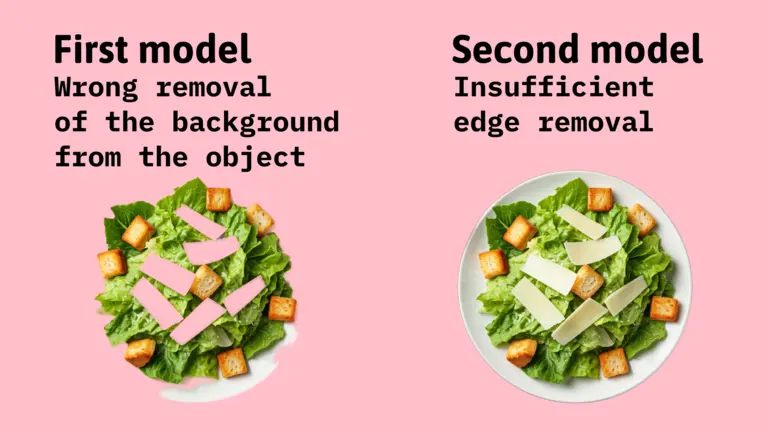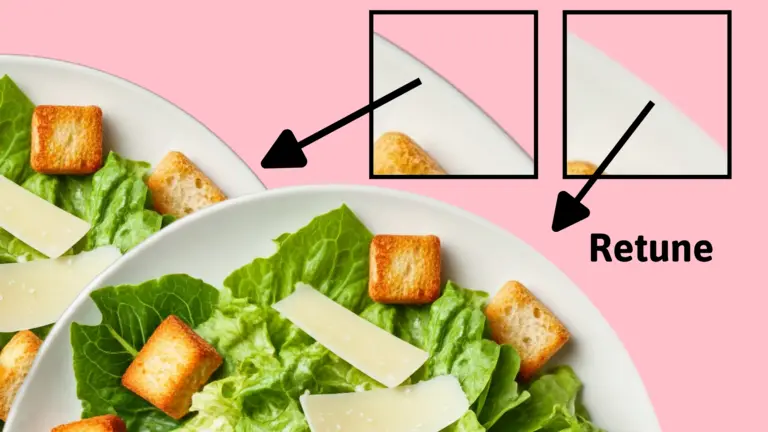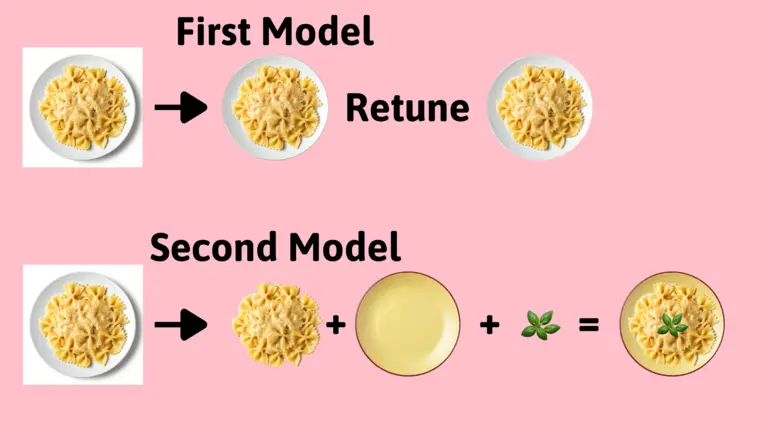In recent years, advancements in artificial intelligence have brought about impressive tools that simplify tasks which once demanded extensive manual labor and expertise. One such application is the use of AI models for background removal in images - a task that traditionally required attention to detail, often done manually with graphic design software. While AI offers significant efficiencies, each model comes with its own strengths and limitations, presenting new challenges and considerations. This article explores these challenges, showcases examples, and demonstrates how combining multiple AI models can yield results that are both more accurate and flexible.
A video is also available for this article, showcasing the processes described.
The Challenge of Imperfect Background Removal with AI
Background removal may seem straightforward, but it often involves complex decisions, such as differentiating between objects and their backgrounds based on color, shape, and texture. AI models use training data to make these decisions, but no single model is perfect for all scenarios. A model that performs well on one type of image may fail on another due to variations in background complexity, lighting, or object color. Therefore, when using a single model, imperfections are almost inevitable. This could manifest as either a part of the object being erroneously removed or the background not being entirely erased, leaving unwanted remnants.
Many professionals who work with these tools know how frustrating it can be to spend hours fine-tuning an AI model’s settings or manually correcting small errors, only to find that the results are still not up to par. Fortunately, combining multiple AI models can offer a solution.
Case Study 1: Combining Models for Optimal Results
To illustrate the benefits of combining models, let’s explore a specific example where each model, when used alone, falls short. In this example, we have two AI models, each with unique strengths and weaknesses:
-
Model 1 is proficient at removing backgrounds but occasionally removes parts of the object if it shares a similar color with the background. This can be problematic when the object of interest is not well-delineated from the background, as the model may interpret sections of the object as part of the background and erase them.
-
Model 2, on the other hand, tends to leave slight edges or shades around the subject, even though it effectively removes most of the background. While it preserves the main object better than Model 1, these residual edges often require manual post-processing.

By combining these models in sequence, we can overcome their individual limitations. In this example, we use Model 2 as the initial layer of processing, allowing it to remove most of the background while leaving a small edge around the subject. This step ensures that the object remains mostly intact, even if it shares colors with the background. Next, we apply Model 1 to refine the edges, removing the remaining unwanted background and creating a cleaner, more accurate result.
This two-step approach effectively compensates for the shortcomings of each model, delivering a refined image that neither model could produce on its own. This example illustrates how a hybrid approach can reduce manual intervention and produce a polished result more efficiently.

Image Choice: The Key to Successful Background Removal
The effectiveness of a background removal model doesn’t just depend on the AI - it also depends on the characteristics of the input image. Images with high contrast between the subject and the background generally yield better results with single-model processing, as the AI can more easily differentiate between the two. However, real-world images are rarely this straightforward. An object may have colors or textures that are too similar to the background, causing even the best models to struggle with segmentation.
Interestingly, a result that appears unsatisfactory for one purpose may be exactly what is needed for another. For example, leaving a slight edge around a subject may be undesirable for certain professional contexts, but it could work well for marketing materials where the subject stands against a similar-colored background. Likewise, a model that removes parts of the object can be useful in cases where a silhouette or a partially masked effect is desired.
This variability emphasizes the importance of carefully selecting images based on the intended outcome and choosing models or combinations accordingly. In cases where achieving precision is a priority, using multiple models becomes essential to refining the output to the highest possible quality.
Case Study 2: Tailoring AI Models to Specific Requirements
Another practical example highlights the need for flexibility in background removal. Suppose we have an image with an object that shares colors with the background, but in this case, we actually want to remove this object entirely. The first AI model successfully retains the object, assuming it to be part of the primary subject. While this may be useful in some situations, it contradicts our specific requirement in this scenario.
To achieve the desired result, we turn to another model that is better suited to identifying and removing the object completely. This process allows us to eliminate the unnecessary object while preserving the quality and accuracy of the image. This example underscores the adaptability of AI - using multiple models, we can achieve vastly different outcomes based on our needs without being restricted to a single interpretation of the scene.

The Synergy of Combining AI Models
The combined use of multiple AI models in image processing unlocks new potential for more nuanced and reliable results. While individual models may fall short in certain respects, their combination can address complex segmentation issues that would otherwise require intensive manual correction.
Here are some advantages of this approach:
-
Increased Accuracy: By layering models with different strengths, it’s possible to address edge cases that would be challenging for any single model, resulting in a more precise background removal.
-
Reduced Manual Intervention: With the appropriate model combinations, the need for tedious manual adjustments decreases significantly, saving time and effort.
-
Customization for Specific Requirements: Different projects have different requirements. Some might need perfect isolation of the subject, while others might be looking for a more stylized result. Combining models offers the flexibility to tailor outputs based on unique project demands.
-
Enhanced Quality: The hybrid approach allows for high-quality outputs that can be used in professional environments where accuracy and clarity are important.
-
Improved Efficiency: For high-volume work, such as in e-commerce or media production, using model combinations can create consistent, high-quality results more efficiently than relying on a single model or manual methods.
Conclusion: Embracing the Power of AI Model Combinations
The field of image processing is a dynamic landscape, and AI has undoubtedly become a powerful tool within it. However, it’s essential to recognize that no single AI model can handle all types of background removal with perfect accuracy. By combining multiple AI models, we gain the ability to tailor our approach to each image’s unique characteristics and our specific goals. This synergy minimizes the weaknesses of individual models while amplifying their strengths, ultimately leading to cleaner, more reliable, and more versatile results.
As AI technology continues to evolve, we can expect even greater specialization among models, which will open new doors for creative and practical applications alike. In the meantime, the approach of combining models stands as a valuable strategy, empowering users to harness the full potential of AI in creating polished, professional images. Whether for design, marketing, or other industries, mastering this technique will be a crucial asset for anyone seeking to make the most out of AI-driven image processing.
